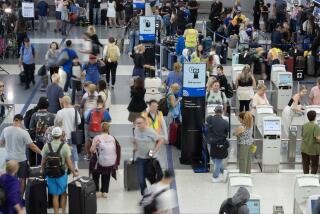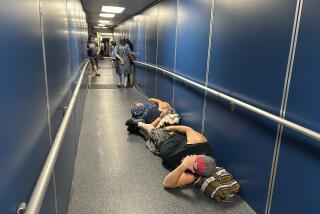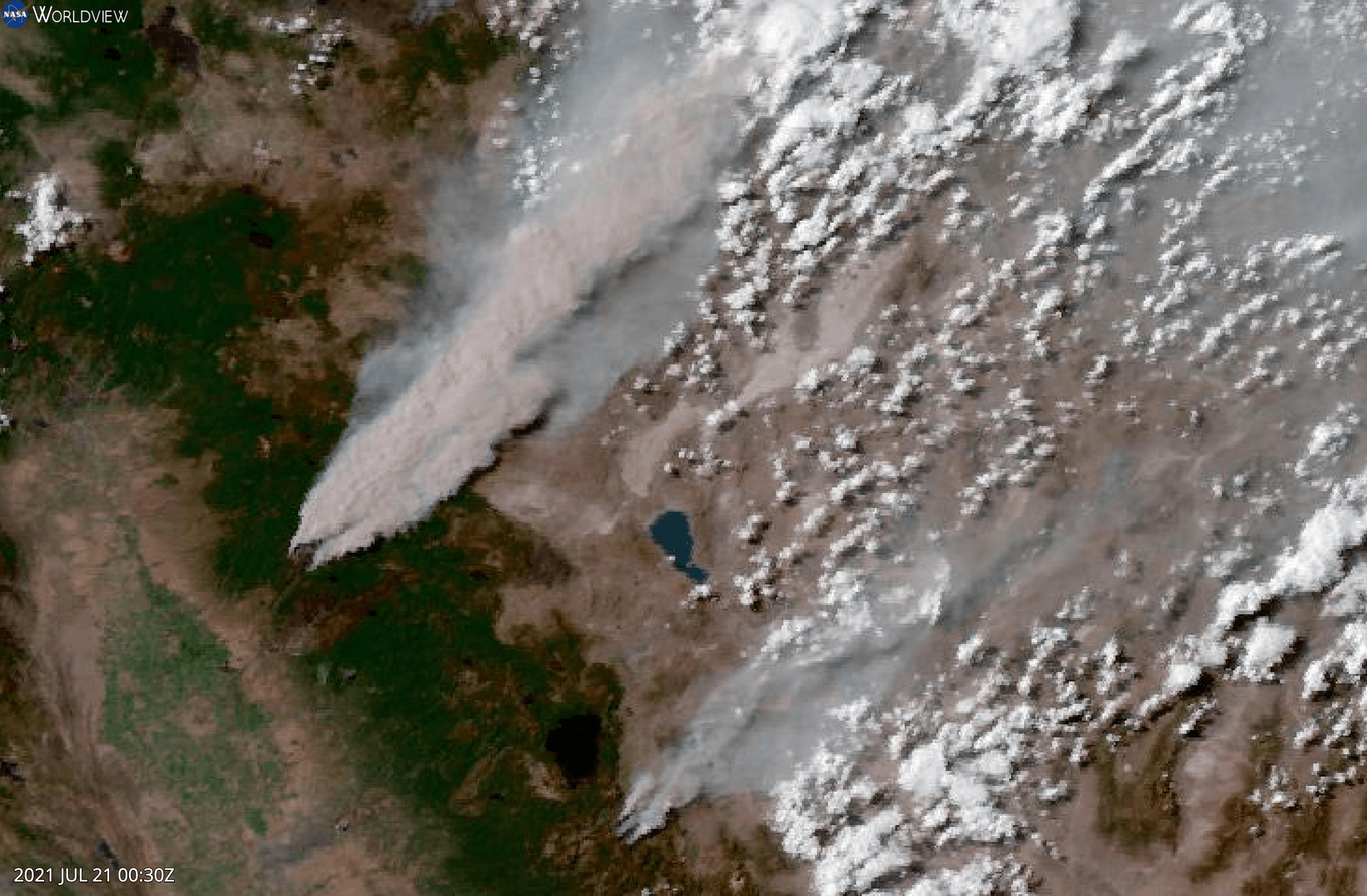Warning System to Be Used at Airport
Coming in to Van Nuys Airport on a November night, cargo plane pilot Robert A. Olson was all alone. With no one on the ground to warn him of weather on the runway, he crashed to his death in a fog bank that for four hours concealed the wreckage where his body lay.
Although it’s uncertain if it would have saved Olson’s life, a new system soon to be activated at the airport is supposed to make sure that pilots are never alone again, even after the control tower closes at night. An automated station, “speaking” through a computerized voice, will report key weather conditions, updated by the minute.
“Pilots will have access to real-time weather information 24 hours a day even if there is no human being making observations,” said Mitch Barker, spokesman for the Federal Aviation Administration.
While the system has critics who contend that it cannot replace the immediacy or accuracy of human response, many concede that it could help overall efforts to provide weather updates.
The new system, establishing a network of automated weather stations at airports across the nation, will not only help pilots at locations such as Van Nuys, where the FAA’s air traffic controllers are not on duty around the clock.
It will also improve safety at major commercial airports “because it allows us to have more weather observations used by our people in telling pilots what they can expect,” Barker said.
Until recently, accurately predicting weather conditions was like “fishing for minnows with a chain-link fence,” as one meteorologist put it. Observation sites and equipment were just too sparse to accurately paint a picture.
But all that is changing with a massive modernization and restructuring of weather reporting techniques, led by the National Oceanic and Atmospheric Administration.
One phase of the modernization, now completed, was installation of the Doppler radar system--responsible for supplying information for the familiar multicolored weather maps.
Another is the Automated Surface Observing System, or ASOS, the system being installed at Van Nuys and hundreds of other airports across the country. Computer-based weather stations, consisting of eight unobtrusive-looking sensing devices erected in a row, are replacing and supplanting human observation stations.
While human weather observers routinely update reports hourly, the automatic systems work by the minute, 24 hours a day.
Since the program began in 1992, 952 automatic systems have been installed nationwide, more than double the number of manned sites.
But well more than half of those still are not in operation because of continuing tests and changes to improve accuracy and reliability, said Susan Callis, ASOS acquisition manager for the National Weather Service, which oversees the program.
The Van Nuys Airport system was installed last August, on a grassy patch north of the control tower. The system, however, is still undergoing tests and is not expected to be in general use until October at the earliest, federal officials said.
The automated systems, which cost about $170,000 each, provide information on a variety of atmospheric conditions, such as cloud height, visibility, rain, temperature, wind direction and speed.
The FAA, while enthusiastic about the automated systems, has asked for a series of improvements. The instruments, for instance, report visibility greater than that perceived by the human eye. A wind speed sensor can freeze and a dew point device corrodes.
At Van Nuys Airport, the tower is closed daily between 11 p.m. and 6 a.m. Pilots must rely on weather reports from Burbank Airport, which is manned around the clock, and from radar controllers in San Diego
“Burbank’s weather is not Van Nuys’ weather,” said Robert Jackson of North Hollywood, a private pilot. “When the tower is closed, we have no real-time local weather reporting.”
There is debate over whether the ASOS system might have saved the pilot in November.
Olson, a seasoned pilot carrying bank checks from Las Vegas, was detoured from Burbank because of fog.
An FAA controller told Olson that other pilots indicated conditions were still clear at Van Nuys, and Olson reported as he approached at 1:17 a.m. that he could see the airport.
Two minutes later, an airport security officer said visibility dropped to zero. No one heard the crash and there was no fire. Olson’s body was not discovered until almost dawn.
“That fog was rolling in at the same time the airplane was trying to land. There’s not a system in existence that could have prevented” the accident, said David Chaillot, a radar technician at Burbank Airport.
Unlike humans, the automated system cannot immediately report sudden changes, such as a fast-moving fog bank. The system, which calibrates in logarithms, would take about nine minutes to issue a warning--probably too much time to have helped Olson.
“I hate to play the devil’s advocate, but from a forecaster’s standpoint, we’re missing an important element--the human element,” said Mike Wittman, Los Angeles meteorologist-manager for a private service, Universal Weather and Aviation.
But Wittman and others concede that the automated systems fill important gaps, such as at Van Nuys. “There are airports out there that are sending weather information that was not sent before,” Wittman said.
The automated system “wasn’t designed to be the end-all for weather information,” said Marilu A. Trainor, a weather service spokeswoman. “But ASOS is a very important tool.”
More to Read
Sign up for Essential California
The most important California stories and recommendations in your inbox every morning.
You may occasionally receive promotional content from the Los Angeles Times.










